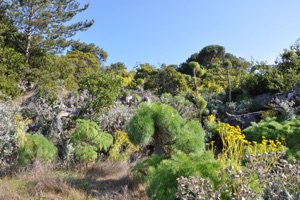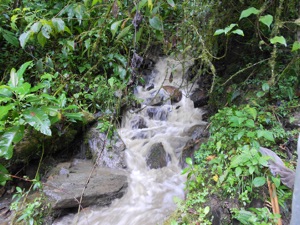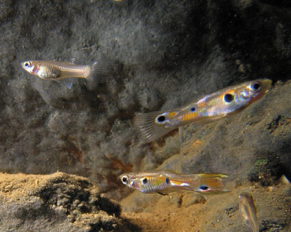Ghalambor Lab
Lab Research
We use a combination of field and lab approaches to study a diversity of questions at the interface of evolution, ecology, behavior, physiology, and conservation. Common themes in our research include the role of phenotypic plasticity in adaptive evolution, the role of divergent selection in shaping adaptive differences at different spatial scales, and how large scale climatic conditions across temperate and tropical environments shape physiology and patterns of biodiversity. To test these questions we work in three groups of organisms freshwater fish, birds, and aquatic insects.
Trinidadian guppies are a model system for studying natural selection in the wild. In their native habitat on the island of Trinidad, guppies show repeated parallel patterns of divergence in a suite of traits that are associated with the presence and absence of predatory fish. Many of these traits have been shown to have a genetic basis and the potential to rapidly evolve following transplants from high to low predation environments. In collaboration with David Reznick at UC Riverside and the CSU Guppy Research Group, we have been studying the rate of adaptive evolution following a new series of introductions. We are also using guppies to study 1) how predator-induced plasticity contributes to adaptive divergence, 2) how suites of traits collectively respond to selection, and 3) the biotic and abiotic factors that limit the geographic range size of guppies and their relatives.
Overview Current Projects Where We Work Collaborators
Islands have long been recognized as model systems for testing fundamental questions in ecology and evolution. The California Channel Islands have been referred to as America’s Galapagos, because of the large number of endemic plants and animals they contain. We have been collaborating with Scott Sillett of the Smithsonian Institution and Scott Morrison of the Nature Conservancy to understand how island populations have diverged from each other and the mainland. Our past work was focused on orange-crowned warblers, while our current work is primarily focused on the Island Scrub Jay.
In 1967 Dan Janzen wrote an influential paper entitled “Why mountain passes are higher in the tropics”. Janzen argued that reduced climatic variability in the tropics results in reduced seasonal overlap in temperature across elevational gradients, which in turn should favor organisms with narrow tolerance to temperature and reduced dispersal. This conceptual model has important implications for patterns of species diversity along elevational gradients, and the sensitivity to warming in temperate and tropical organisms. We are testing many of the assumptions and predictions of this model as part of collaborative project called EvoTRAC- Evolutionary & Ecological Variability in Organismal Trait Response with Altitude and Climate, which is comparing patterns of species diversity, dispersal, and physiology in stream insects of Colorado and Ecuador.


